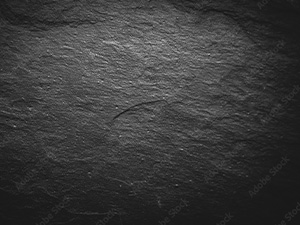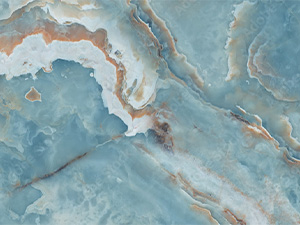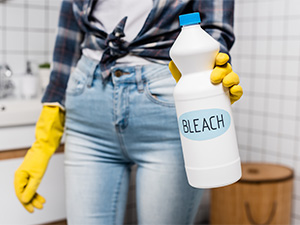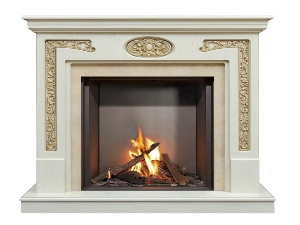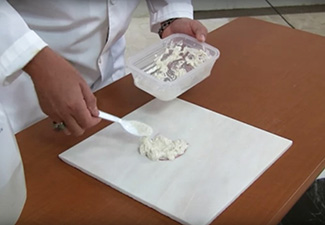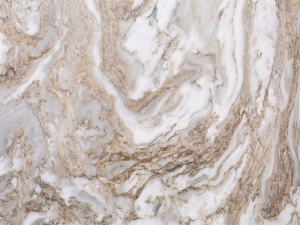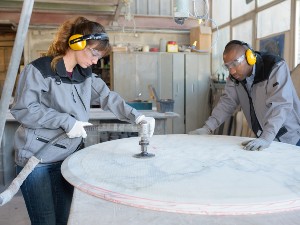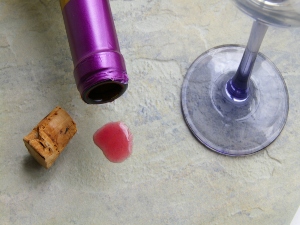Textured natural stone finishes, such as honed, flamed, sawn, river washed or tumbled, have gained popularity in interior and exterior design for their unique eye-catching appeal and functional qualities. These finishes offer a departure from the traditional polished surfaces, providing a distinct look and feel. However, like any design choice, they come with their own set of pros and cons that should be carefully considered.
Let’s look at some of the pros and cons of textured natural stone finishes:
Pros:
- Enhanced Aesthetic Appeal: Textured natural stone finishes add depth and character to surfaces, creating a more natural and rustic appearance. The honed finish, for instance, showcases a matte appearance with a soft, velvety touch, while river washed finishes emulate the smoothness and weathered look of river stones. This aesthetic versatility allows for a broader range of design possibilities, making these finishes suitable for both modern and traditional settings.
- Improved Slip Resistance: One of the notable advantages of textured natural stone finishes, especially river washed, is their enhanced slip resistance. The uneven surface creates additional traction, making these finishes ideal for areas prone to water exposure, such as bathrooms, kitchens, or outdoor spaces. This finish enhances safety and reduces the risk of accidents due to slipping.
- Conceals Wear and Tear: Textured finishes are effective at concealing minor scratches, etches, or wear and tear compared to their polished counterparts. The matte surface of honed granite, for example, tends to camouflage small imperfections, maintaining a more consistent and pleasing appearance over time.
- Less Reflective: Unlike a polished finish, textured finishes are less reflective, which can be beneficial in spaces where glare or excessive light reflection is a concern. This makes them suitable for areas with abundant natural light or spaces where a subdued ambiance is desired.
Cons:
- Susceptible to Stains: Textured natural stone finishes, particularly honed surfaces, may be more susceptible to staining compared to polished ones. The porous nature of these finishes allows liquids and substances to penetrate more easily, making it important to promptly clean up spills to avoid permanent stains. Regular sealing is often recommended to mitigate this issue.
- Reduced Shine and Luster: While some homeowners appreciate the matte appearance of honed, flamed or river washed finish, others may miss the high-gloss shine associated with polished surfaces. If a glossy, reflective finish is a priority for a specific design vision or décor idea, textured finishes may not fulfill that requirement.
- Maintenance Challenges: The textured nature of these finishes can pose challenges when it comes to maintenance. Cleaning and maintaining textured natural stone may require more effort compared to polished surfaces. Dirt and grime can accumulate in the uneven crevices, making it necessary to thoroughly clean the stone more often to preserve and maintain it’s appearance.
- Limited Color Intensity: Textured finishes may not showcase the natural color and veining of the stone as prominently as polished surfaces. The process of honing or river washing can mute the colors and patterns, resulting in a less vibrant appearance. This may be a drawback for those who want the full visual impact of the stone.
The choice between textured natural stone finishes and polished ones depends on individual preferences, practical considerations, and the intended use of the stone. While textured finishes offer a distinctive aesthetic and improved slip resistance, they come with trade-offs in terms of maintenance and potential staining. Careful consideration of these pros and cons will help homeowners and designers make informed decisions based on their specific needs and preferences.
By Sharon Koehler. This article is one of a series of articles written and published on behalf of Surface Care PRO Partners.

